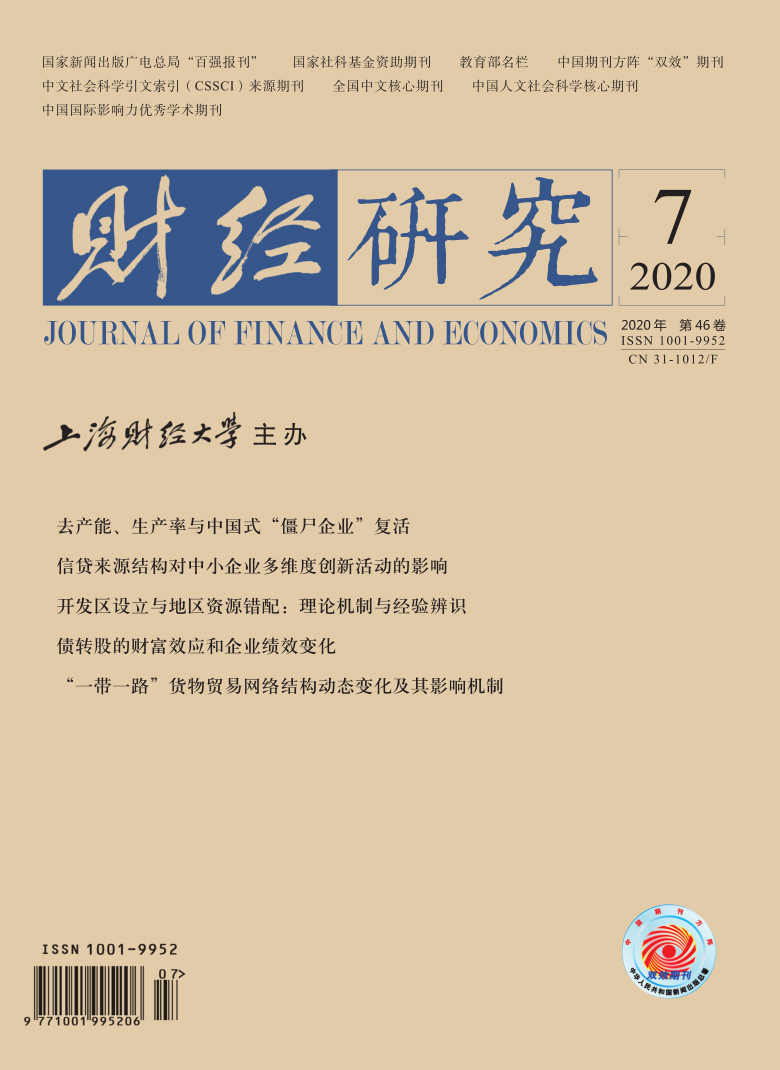最低工资规制通过设定一个底部工资标准,旨在维护劳动者取得劳动报酬的合法权益,不可避免地会对企业的工资率产生影响,进而影响企业内部的要素收入分配。文章的理论模型分析表明,最低工资规制的工资率效应促使企业转变要素分配方式(资本−劳动互替),导致企业资本集约度上升,从而劳动收入份额将会下降。利用中国2600多个区县最低工资标准和工业企业数据(1998−2013年)的实证研究验证了理论预期:(1)最低工资规制显著降低了企业的劳动收入份额,最低工资每上涨10%,劳动收入份额将显著下降1.43个百分点;(2)最低工资规制存在着工资率效应和劳动生产率效应,但是由于工资率效应更小,结果使劳动收入份额下降;(3)资本集约度是最低工资影响劳动收入份额的一个重要机制。文章有助于理解我国最低工资规制对企业行为的影响,这对改善我国初次收入分配格局具有有益的政策启示。
最低工资规制对企业劳动收入份额的影响——理论分析与微观证据
摘要
参考文献
7 潘红波,陈世来. 《劳动合同法》、企业投资与经济增长[J]. 经济研究,2017,(4):92−105. DOI:10.3969/j.issn.1672-5719.2017.04.084
14 周茂,李雨浓,姚星,等. 人力资本扩张与中国城市制造业出口升级:来自高校扩招的证据[J]. 管理世界,2019,(5):64−77. DOI:10.3969/j.issn.1002-5502.2019.05.006
15 Álvarez R,Fuentes R. Minimum wage and productivity:Evidence from Chilean manufacturing plants[J]. Economic Development and Cultural Change,2018,67(1): 193−224. DOI:10.1086/697557
16 Bai X, Chatterjee A, Krishna K, et al. Trade and minimum wages in general equilibrium: Theory and evidence[R]. NBER Working Papers 24456, 2018.
17 Baron R M,Kenny D A. The moderator-mediator variable distinction in social psychological research:Conceptual,strategic,and statistical considerations[J]. Journal of Personality and Social Psychology,1986,51(6): 1173−1182. DOI:10.1037/0022-3514.51.6.1173
18 Bauducco S,Janiak A. The macroeconomic consequences of raising the minimum wage:Capital accumulation,employment and the wage distribution[J]. European Economic Review,2018,101: 57−76. DOI:10.1016/j.euroecorev.2017.09.012
19 Berkowitz D, Ma H, Nishioka S. Declining labor shares and heterogeneous firms[R]. Working Paper 552, 2015.
20 Bosch M,Manacorda M. Minimum wages and earnings inequality in urban Mexico[J]. American Economic Journal:Applied Economics,2010,2(4): 128−149. DOI:10.1257/app.2.4.128
21 Brandt L,Van Biesebroeck J,Zhang Y F. Creative accounting or creative destruction? Firm-level productivity growth in Chinese manufacturing[J]. Journal of Development Economics,2012,97(2): 339−351. DOI:10.1016/j.jdeveco.2011.02.002
22 Caliendo M, Schröder C, Wittbrodt L. The causal effects of the minimum wage introduction in Germany: An overview[R]. CEPA Discussion Papers 01, 2019.
24 Card D,Krueger A B. Minimum wages and employment:A case study of the fast-food industry in New Jersey and Pennsylvania:Reply[J]. American Economic Review,2000,90(5): 1397−1420. DOI:10.1257/aer.90.5.1397
25 Dolado J,Kramarz F,Machin S,et al. The economic impact of minimum wages in Europe[J]. Economic Policy,1996,11(23): 317−372. DOI:10.2307/1344707
26 Dube A,Lester T W,Reich M. Minimum wage effects across state borders:Estimates using contiguous counties[J]. The Review of Economics and Statistics,2010,92(4): 945−964. DOI:10.1162/REST_a_00039
27 Hau H, Huang Y, Wang G W. Firm response to competitive shocks: Evidence from China’s minimum wage policy[R]. Swiss Finance Institute Research Paper No.16-47, 2019.
28 Lee D S. Wage inequality in the United States during the 1980s:Rising dispersion or falling minimum wage?[J]. The Quarterly Journal of Economics,1999,114(3): 977−1023. DOI:10.1162/003355399556197
29 MaCurdy T. How effective is the minimum wage at supporting the poor?[J]. Journal of Political Economy,2015,123(2): 497−545. DOI:10.1086/679626
30 Malloy L C. The minimum wage,bargaining power,and the top income share[J]. Forum for Social Economics,2020,49(1): 75−98. DOI:10.1080/07360932.2016.1155468
32 Neumark D,Schweitzer M,Wascher W. Minimum wage effects throughout the wage distribution[J]. The Journal of Human Resources,2004,39(2): 425−450. DOI:10.2307/3559021
33 Neumark D,Wascher W. Minimum wages and employment:A case study of the fast-food industry in New Jersey and Pennsylvania:Comment[J]. American Economic Review,2000,90(5): 1362−1396. DOI:10.1257/aer.90.5.1362
35 Parisi M L. Labor market rigidity,social policies and the labor share:Empirical evidence before and after the big crisis[J]. Economic Systems,2017,41(4): 492−512. DOI:10.1016/j.ecosys.2017.08.003
36 Riley R,Bondibene C R. Raising the standard:Minimum wages and firm productivity[J]. Labour Economics,2017,44: 27−50. DOI:10.1016/j.labeco.2016.11.010
37 Vergeer R,Kleinknecht A. The impact of labor market deregulation on productivity:A panel data analysis of 19 OECD countries (1960-2004)[J]. Journal of Post Keynesian Economics,2010,33(2): 371−408. DOI:10.2753/PKE0160-3477330208
38 Vergeer R,Kleinknecht A. Do labour market reforms reduce labour productivity growth? A panel data analysis of 20 OECD countries (1960-2004)[J]. International Labour Review,2014,153(3): 365−393. DOI:10.1111/j.1564-913X.2014.00209.x
引用本文
万江滔, 魏下海. 最低工资规制对企业劳动收入份额的影响——理论分析与微观证据[J]. 财经研究, 2020, 46(7): 64-78.
导出参考文献,格式为:






 7550
7550  7979
7979

